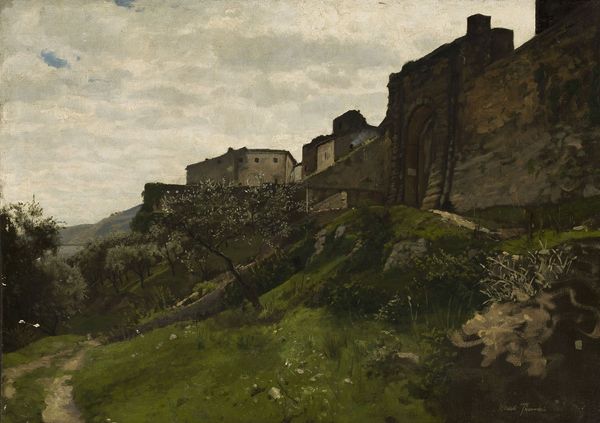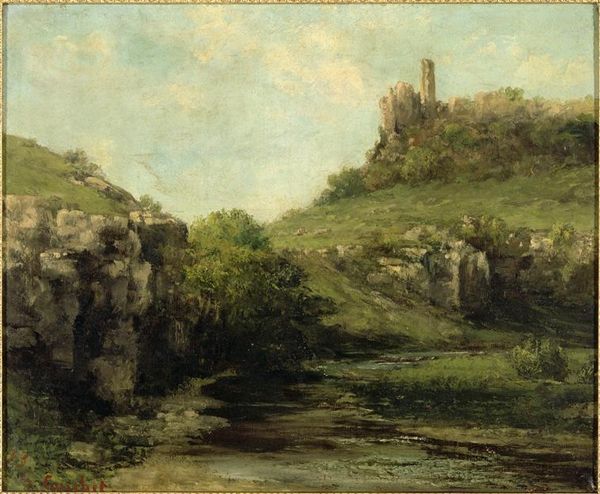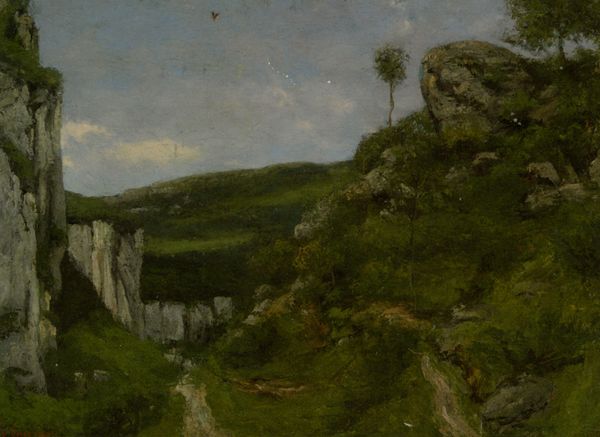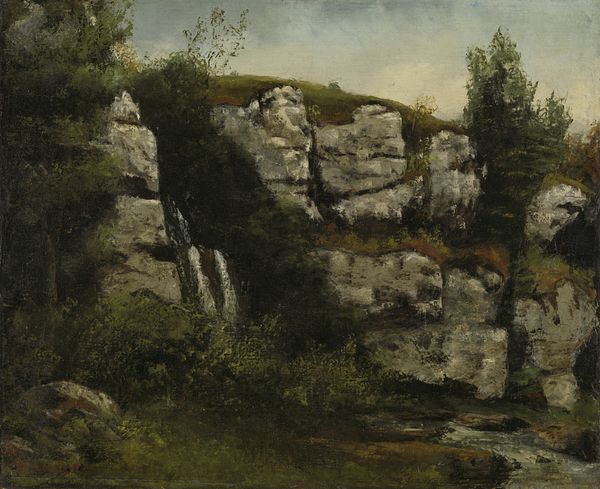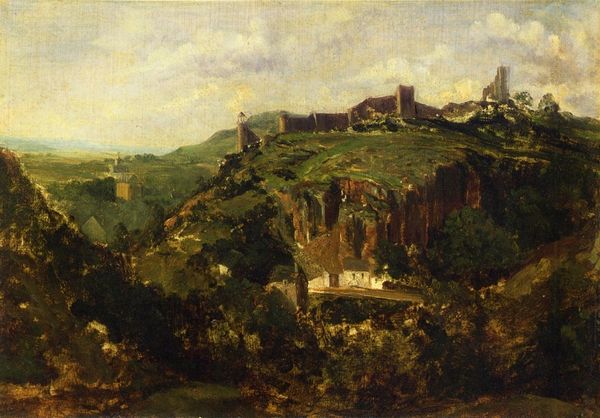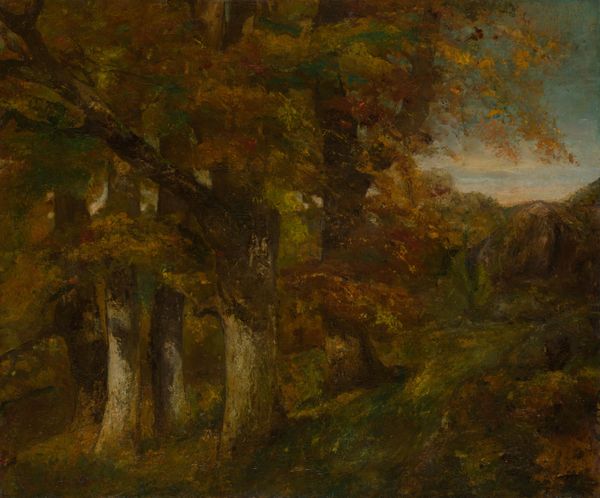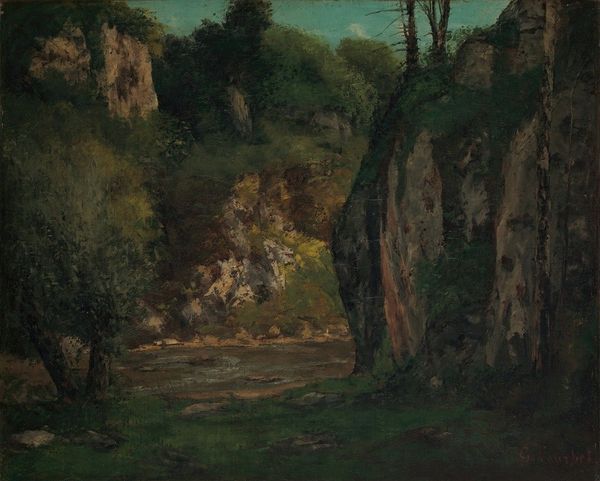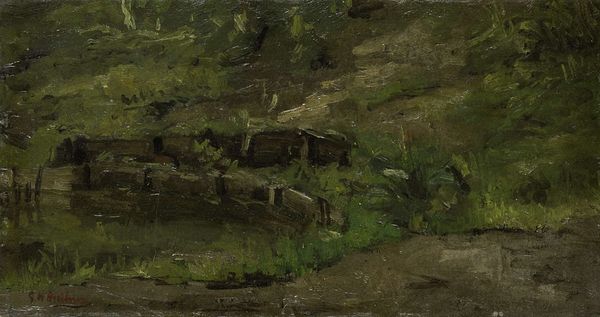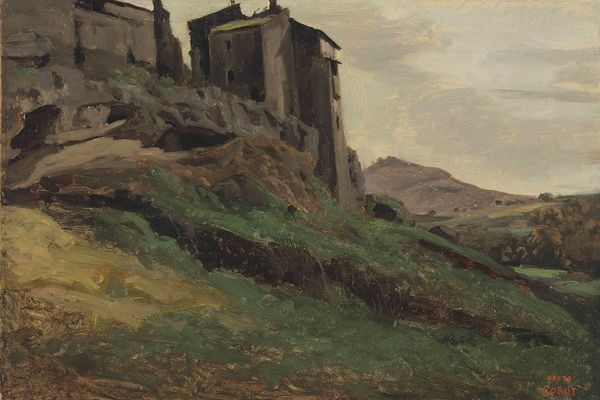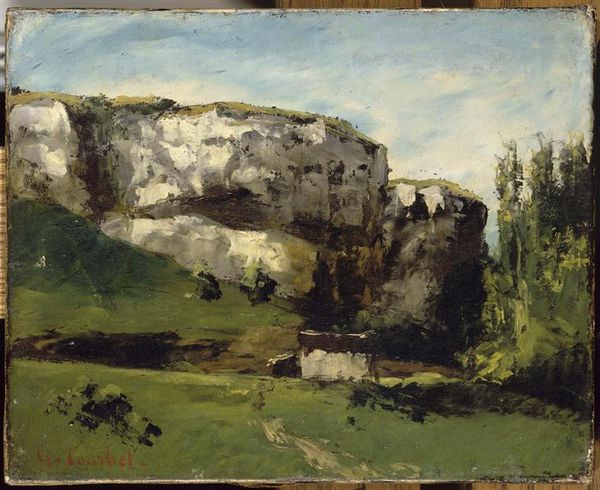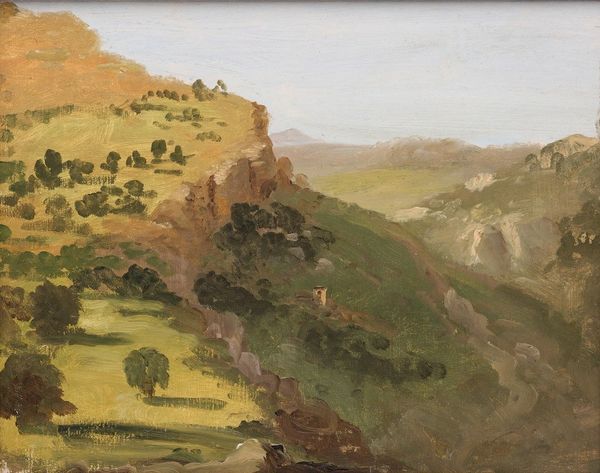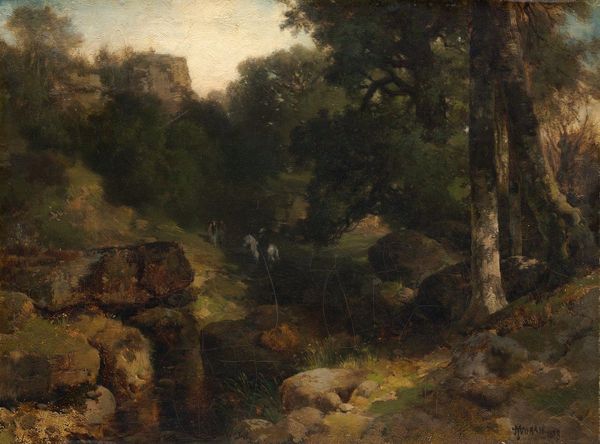
drawing, charcoal
#
drawing
#
impressionism
#
landscape
#
charcoal drawing
#
charcoal
#
charcoal
#
mixed medium
#
realism
Copyright: Public Domain: Artvee
Editor: So, here we have Gustave Courbet’s “Rochers à Ornans,” created in 1869 using charcoal and mixed media. It's so subdued – almost like peering through a soft fog. I'm curious, what stands out to you when you look at this landscape? Curator: You know, what captures my attention isn't just what's *in* the drawing, but what Courbet leaves out. There’s a mystery in those barely-there charcoal strokes, isn’t there? Like he's hinting at the scene, inviting you to fill in the details from your own imagination. Have you ever felt like you're looking at a half-remembered dream when you see a landscape? Editor: That's a really interesting take. It does feel incomplete somehow. I was so focused on the heaviness of the rocks, but now I see how delicate the execution is. Does the 'realism' tag sit right with that dream-like quality? Curator: Ah, 'realism'! What a funny word. Courbet was revolutionary, wasn't he? Insisting on painting what he *saw*, not some idealised version of it. But isn't memory, perception itself, always a little… dreamlike? I reckon Courbet was trying to capture *that* realism, the way a place truly *feels*, rather than just looks. Editor: I get it, you’re painting an experience, not a picture postcard! This has totally changed my perspective. Thanks! Curator: My pleasure! It’s those little shifts in how we see that make art so endlessly rewarding, eh?
Comments
No comments
Be the first to comment and join the conversation on the ultimate creative platform.
